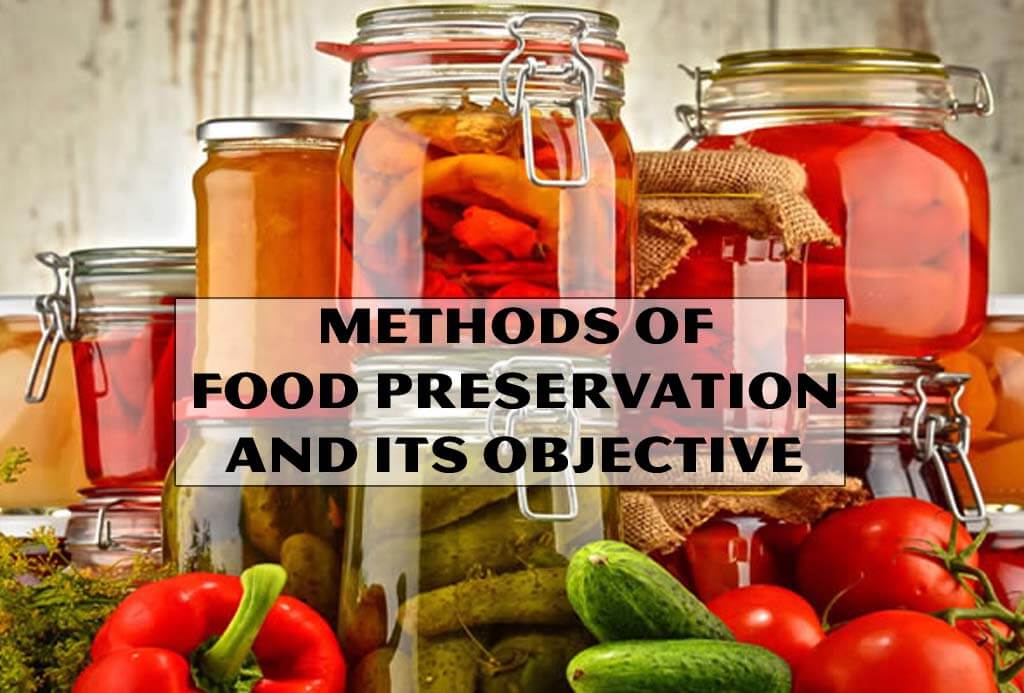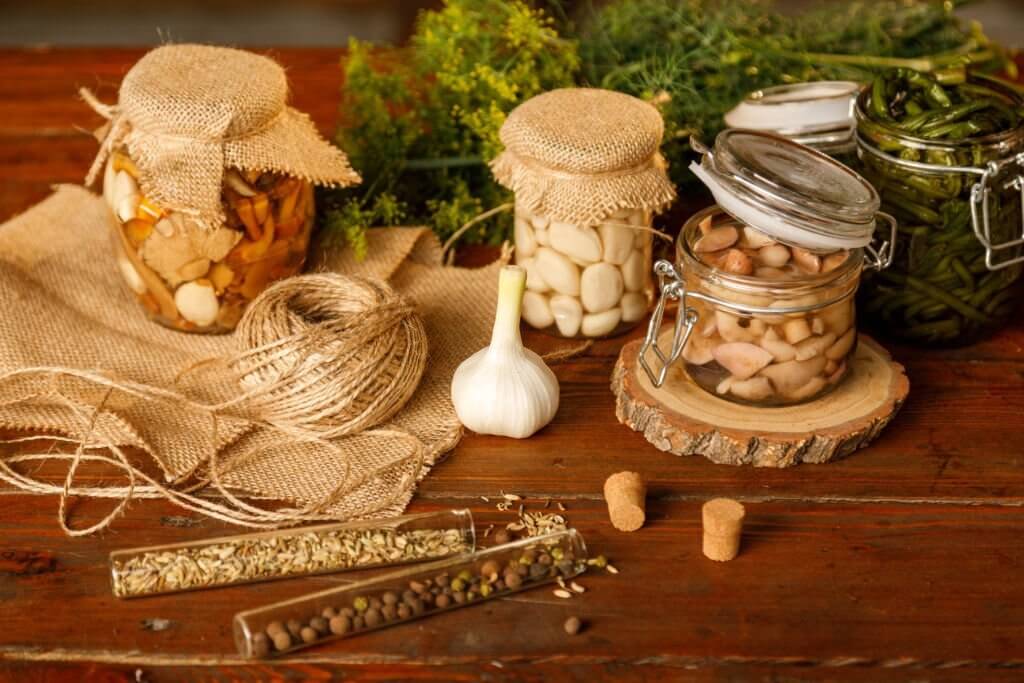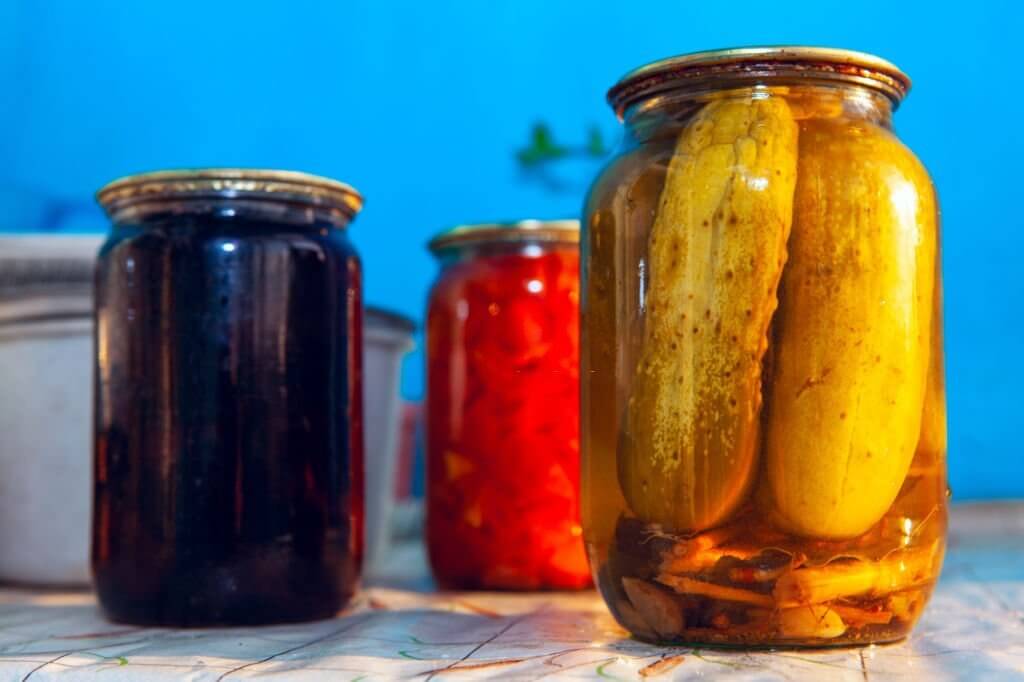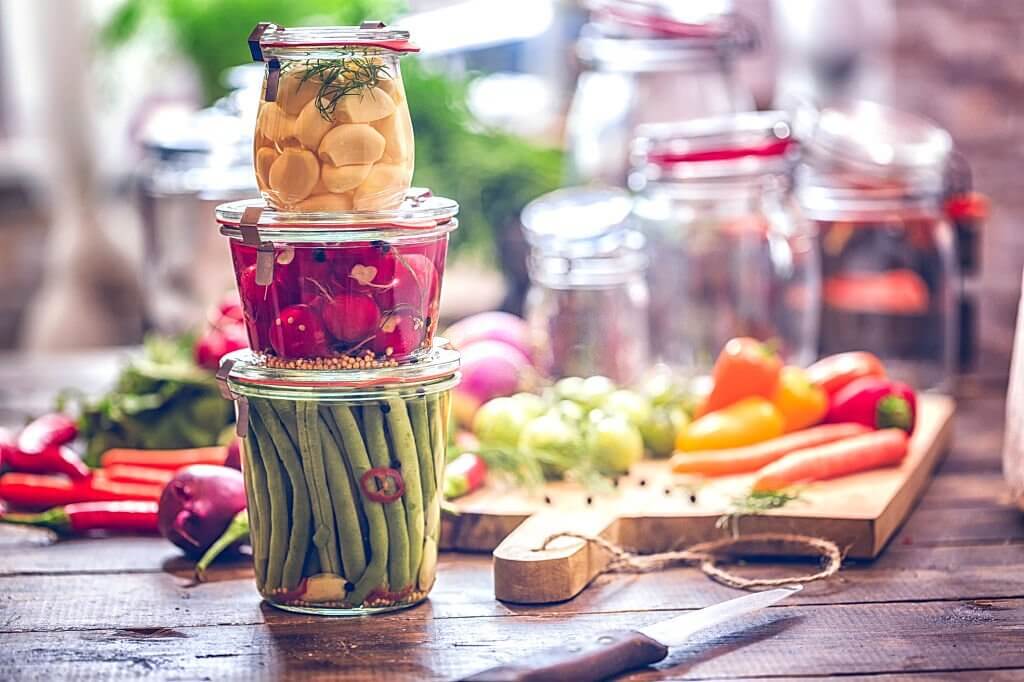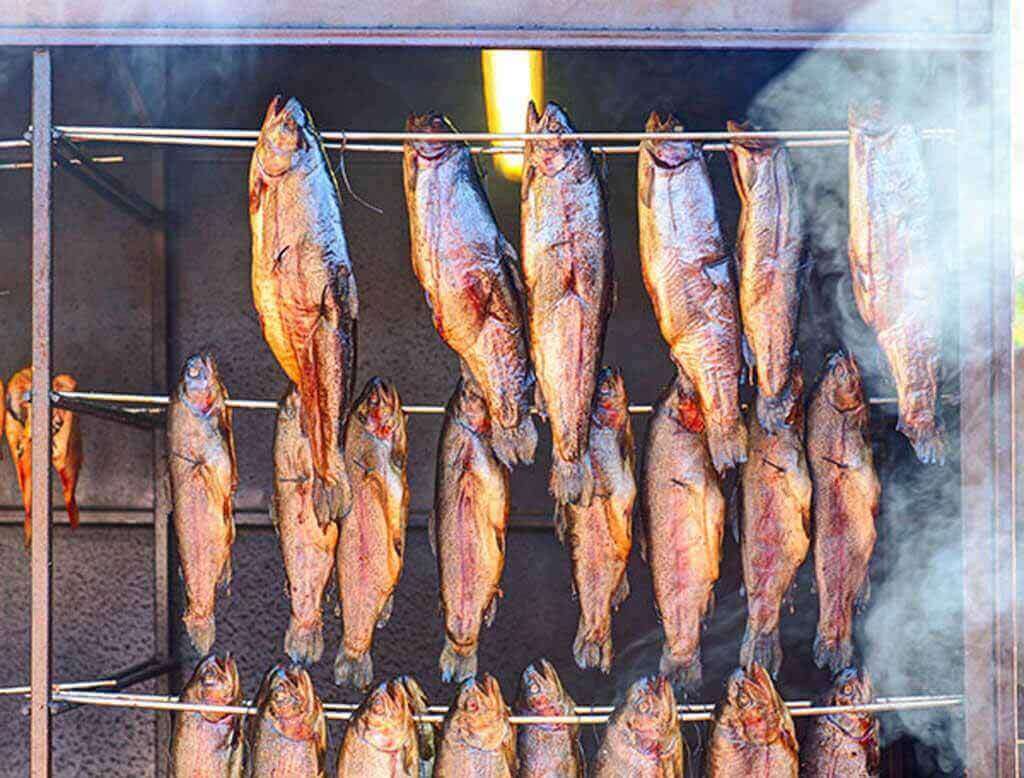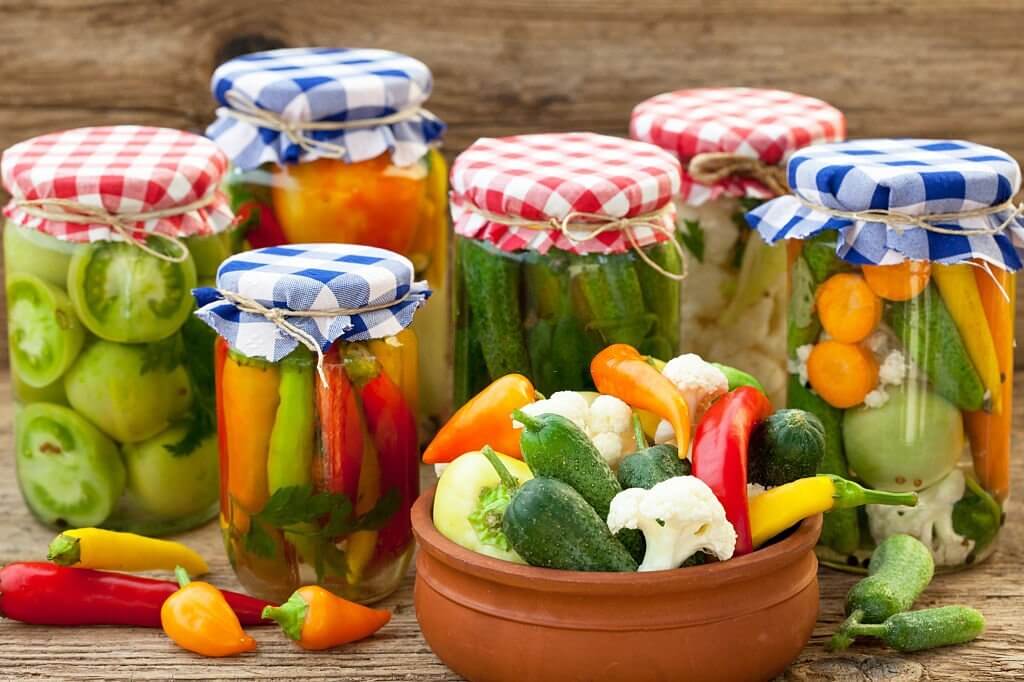Different types of food preservation methods are utilized to keep them fresher for longer. Yeasts, for example, can ferment certain types of food and convert them into alcoholic concentrations. Fat and oil seals can also prevent the growth of airborne microorganisms by starving aerobic bacteria of oxygen.
Heat processing can also preserve food by forcing out air as steam or creating a sterile vacuum. In addition, food can be dried by drying in warm air or sealed in a solution of sugar or salt.
In this article, we shall discuss the mechanisms of food preservation, their application conditions, and their advantages and disadvantages. We shall then examine the different types of food and the factors that affect their shelf-life.
We will then consider the market economy of processed and preserved food products and how they differ from one another. For a comprehensive understanding of food preservation, we should understand its objectives. Then, we can decide whether a particular method is suited to our requirements.
What Is Food Preservation?
What is food preservation? Food preservation is the process of slowing or eliminating changes to food through the use of chemical, physical, or biological agents.
Physical preservation removes some constituent of food, while chemical preservation adds other components. Biological preservation involves the action of organisms on food. Foods may be preserved in a variety of ways, including freezing and dehydrating. Food preservation can be environmentally friendly means of preserving food.
Among the most common methods, such as freezing, canning, preserving, and freezing, food preservation extends the shelf life of food products. This practice makes it possible to retain different flavors even during the cold months, which saves money on fresh produce.
Besides saving money, food preservation also helps to reduce energy requirements by industrial farmers. All these reasons make food preservation an essential process. Let’s take a closer look at how food preservation works.
One of the oldest methods of food preservation is by removing the moisture from food. By doing this, food loses moisture and becomes unfavorable for microorganisms. In fact, very few organisms can survive in a high salt condition.
This method can be combined with other methods to preserve foods, including dehydration and acidification. This method preserves a variety of foods, including jams and other items.
Objective Of Food Preservation
Food preservation is the process of preserving foods to increase their shelf life and reduce the amount of produce that goes bad. Foods are organic substances consumed for their nutritional value, but they can be spoiled easily due to chemical, physical, and microbial action.
Food preservation techniques protect the nutritional value, color, and texture of food, as well as prevent spoilage. It may include freezing, vacuum packaging, and various forms of heat treatment and UV radiation.
Food preservation techniques are used to minimize the impact of bacteria that cause food to spoil. Bacteria thrive in warmth and moisture, and they quickly degrade food. Food preservation techniques prevent bacteria from growing, reducing costs, and extending the shelf life of foods.
Depending on the type of preservation method, these methods can prolong the shelf life of foods by years, months, or even years. Some of these methods are even edible, despite their complexity.
Modern techniques of food preservation are based on different stages of the food processing process. The stages involved include growing, harvesting, processing, packaging, distribution, and more.
Some methods involve integrating all these stages to preserve foods throughout the production process, allowing food to maintain its nutritional value and quality. It also offers more value-added products and dietary variety.
Food spoilage can be caused by a variety of chemical reactions. Food preservation techniques have evolved from primitive methods to become an interdisciplinary science.
What Are The Different Ways Of Food Preservation?
Preserving food has been practiced for centuries, and salting is the oldest form of preservation. There are a number of intrinsic and extrinsic factors that promote food preservation.
When applied singly or in isolation, they are limited. When applied sequentially and simultaneously, they are enhanced. In other words, the hurdle effect and synergy of these factors promote food preservation. This article discusses a few of the most popular food preservation methods.
Freezing is the most popular form of long-term food preservation. Even city dwellers can use freezers in a basic way to store food. The best way to get started with home food preservation is to freeze foods that you have on hand.
Depending on what type of food you’re preserving, freezing may be the easiest option for storing a variety of foods. The only difference between freezing and preserving is the amount of prep work required.
What Is The Importance Of Food Preservation?
Foods are organic substances that are consumed for their nutritional value. They may be of plant or animal origin and may contain a range of organic substances.
Foods can be spoiled due to various physical, chemical, and biological processes. Degradation causes loss of quality attributes of food and requires preservation to maintain its original quality.
Food preservation methods are applied at different stages of the food production process to prolong their shelf lives and preserve their original nutritional, physical, and chemical properties.
Modern food preservation methods include freezing, canning, and pickling. Traditionally, fruits were preserved using honey. Eventually, sugar cane was introduced to Europe, where it was used to preserve fruit in cold climates.
Sugar kills microbes by drawing out water and leaving them dehydrated. Food preservation techniques can improve food safety, and palatability, as well as improve nutritional content. In addition, these methods have helped humans live longer and healthier lives.
Various methods are used to preserve foods, including drying, storing, and canning. Some methods involve burying the food in the ground or placing it in clamps.
These are not the same as root cellars, but they are effective ways to preserve food. In the northern United States, farms used to bury cabbage in autumn to prevent it from spoiling. Some of these methods maintain the crispiness of the cabbage while others yield sauerkraut. Kimchi is traditionally made this way.
What Are The Modern Methods Of Food Preservation?
In addition to refrigeration, modern food preservation methods also reduce the risk of bacterial growth. Bacteria need heat, moisture and time to multiply. They may also attack plants or animals and destroy essential biochemical compounds.
The main goal of modern food preservation is to minimize these conditions so that food remains safe for consumption. Read on to learn more. Here are some modern methods of food preservation:
Drying reduces water activity to prevent bacterial growth and preserve freshness. Natural processes include wind and sun, but modern methods include bed, fluidized bed, shelf, and spray drying.
Commercial food preservation dehydrators use these methods. Freezing is another method that prolongs food’s shelf life. Traditional methods include stewing meat in earthenware. Desiccants are used to preserve root vegetables. Once cooked, potatoes may be stored in dark rooms or even the freezer.
Fermentation: Another form of food preservation, fermentation is popular for its unique flavor. It is a natural process that can cause food to spoil, but carefully controlled fermentation is an effective way to produce desired effects and protect it from harmful organisms.
Fermentation can kill pathogens, or reduce the risk of food spoilage, but the bacteria or yeast used in fermentation are often beneficial additions to the human gastrointestinal tract.
Food Spoilage Mechanisms
The mechanisms of food spoilage are complex and vary greatly from organism to organism. In general, food spoilage occurs when the organic molecules of food undergo a spontaneous reaction, usually resulting in off-flavour, texture degradation, and loss of nutrients.
Food spoilage is caused by microorganisms that compete with humans for food resources. The bacteria and fungi that cause food spoilage can rapidly colonize unprotected foods and produce toxins, which can lead to health problems.
In general, three major food-stability factors influence the shelf life of foods: physical, chemical, and microbiological. The first two of these factors lead to food degradation and are generally the most dangerous.
These reactions can occur after food is harvested or slaughtered. In some cases, a mechanically damaged food will release enzymes that begin the breakdown of cellular material. The second type of food-stability-related problem involves moisture-related problems.
The modern food supply relies on energy-intensive industrial-technological processes and transportation to move the vast variety of food from farm to fork. Furthermore, food is lost in transit.
In the United States, 40% of food spoils during its transit from farm to fork. Thankfully, many cities are creating systems to reduce this problem and ensure the safety of their food supply. This is one of the primary reasons for the high percentage of food waste in developed countries.
5 Methods Of Food Preservation
The main goal of food preservation is to stop the activity of microorganisms and destroy their enzymes. Acidic, dry, high-sugar or heat-treated foods are unsuitable for these organisms.
The combination of heat and high sugar and salt is not conducive to their survival. Jams and jellies are the perfect examples of such products. Moreover, the colder a food is stored, the slower its deterioration.
Refrigeration and freezing impede bacterial action, while blanching stops enzyme activity. Fruits should be sprinkled with sugar after blanching to limit enzyme activity.
Low-Temperature Preservation
The term preservation refers to any method of extending the life of food. It involves delaying or stopping natural processes that cause the degradation of food.
Almost all food contains biological material that decomposes in the correct conditions, and preservation is the process of preventing these natural processes from occurring in food.
Here, we look at some of the best known low-temperature methods of food preservation. Using one of these techniques can extend the life of food and make it more usable in a variety of applications.
The primary advantage of this preservation method is that it prolongs the shelf life of living produce by reducing the metabolic activity. By chilling, pasteurized canned foods and dairy products are kept fresher for longer.
Cold storage of fruits and vegetables helps them sprout. Moreover, it inhibits enzymatic reactions, so they retain their flavours and colours. Low-temperature food preservation techniques use pre-treatments and reduced water activities to enhance the preservation of different types of foods.
Fermentation And Pickling
Fermentation and pickling are two methods of food preservation that use acid to alter the texture and taste of foods. Both methods are ancient, dating back to thousands of years.
Pickling involves soaking foods in a brine containing salt, sugar, and spices. Using this method produces a crisp, firm product that tastes delicious. Commercial pickles often contain a preservative. Fermentation and pickling are different methods of food preservation that are both natural and organic.
The traditional British method of food preservation, called clear pickles, uses stable bacteria to preserve food. The vegetables and fruits used are usually raw or lightly cooked.
The vegetables are then mixed with a pickling liquid that is usually made from vinegar and salt. Spices can be added for taste or to inhibit bacteria from developing. After the pickling process is complete, the food is placed in a jar and sealed. Pickled foods can be stored for varying periods of time.
Chemical Preservation
Foods are usually preserved by adding chemical preservatives to them. The primary role of food preservatives is to prevent the breakdown of food products due to oxygen, microorganisms, and enzymes.
Preservatives must be nontoxic, have an antimicrobial effect across a broad pH range, and be economical. Here are some examples of chemical food preservatives. But how do you choose the right one for your food?
Saltpeter and sodium nitrate are common ingredients used for food preservation. Both salts work by interfering with the transport system of cell membranes, preventing nutrients from penetrating inside.
While they are effective against many types of bacteria, they do not alter the taste of food. The salts are best suited for acidic foods. Some of these agents are used in the preservation of cheese and meats.
Food Irradiation
In 2009, more than 380,000 tonnes of food was irradiated worldwide for human and animal consumption. These foods were produced in Europe, the Americas and Asia Pacific.
Although the figures come from publicly available sources, they may be difficult to understand. They may also include some foods that are not irradiated, causing them to become mushy or brown. However, the figures can be considered more reliable since they include the amount of food that was irradiated in each region.
In addition to extending shelf life, food irradiation can also prevent sprouting of certain foods, including potatoes, onions and garlic.
Other uses of irradiated food include extending the shelf life of red currants, fruits, and wheat. Some countries have even started using irradiation to control insects in grain. But is it safe? Is food irradiation an effective way to preserve food?
Refrigeration
Food preservation techniques use both physical and chemical methods to slow down or completely prevent the growth of undesirable microbes. Freezing, in particular, stops bacterial activity and prevents most of them from dividing.
Preservatives like antimicrobials, meanwhile, prevent oxidation. Historically, people have used cold temperatures to preserve food. Caves were used for this purpose. The development of mechanical refrigeration began in the 19th century.
The majority of food spoilage is caused by pathogen attack, namely bacteria or mold. Oxidation, on the other hand, results in the destruction of plant and animal cells and essential biochemical compounds.
Almost all methods of food preservation are designed to reduce either or both of these agents. By extending the life of food, the cost of wasted food is greatly reduced. However, the effectiveness of these techniques depends on how they are used.
Other Methods Of Food Preservation
There are other ways of preserving food. These methods range from using heat and cold to smoke and dehydration. Read on to know more about these methods. This article will cover the basics of heat and cold preservation and how each of them works.
Heat And Cold Methods
Various types of food are preserved by either Cold Methods or Heat Methods. The main difference between the two is the duration of preservation.
Foods stored under Cold Methods or Heat Methods are more durable and longer-lasting than the same food that was frozen at room temperature. However, both methods are not equally effective in preserving food. Both methods require proper storage conditions.
The first food preserved by Heat and Cold Methods is berries. Its method used controlled temperatures to slow the chemical reactions of the food. As a result, pathogens are not able to live at these temperatures.
Foods that are stored using the Cold Methods are more likely to be durable. Food that is frozen is generally drier and more flavorful than those preserved by Heat Methods. Drying is another common method.
Smoking
One of the oldest methods of food preservation is smoking. Smoking can be traced back to when man first learned to control fire and began to process food. Foods smoked in a smokehouse retain more flavor and last longer before spoiling.
Throughout history, people have used smoke to preserve a wide variety of food, from fish to meat. Smoking is a natural preservative and contains many chemical compounds found in wood smoke.
The smoke produced during food processing deposits a variety of constituents on food surfaces, preventing them from escaping into the environment.
Smoke contains formaldehyde and phenols, which convert brine-solubilized protein into pellicule. Pellegrine serves as a reinforcement to the surface of the food, preventing microorganisms from reaching it. It also prevents oxidative rancidity.
Canning
Canning is a way to preserve food by processing it in a closed glass jar at high temperatures. This heat stops natural spoilage processes, destroys contaminants, and removes air from the jar.
The process also uses a vacuum seal to prevent re-contamination. There are two methods of canning known as pressure canning and water bath canning. Learn more about each method to make sure you choose the best one for your needs.
The key to the success of canning is the retention of most nutrients. It preserves the nutrients in food, including proteins, carbohydrates, and fats. The process also prevents the growth of bacteria, fungi, and spores.
The process also inactivates enzymes and creates a vacuum seal, which keeps bacteria from growing. Canning also helps prevent contamination during storage. However, if you don’t have the time to process your food yourself, you can purchase pre-packed products.
Dehydration
Dehydration reduces the water content of foods, making them more easily over-eating. Because dehydrated foods do not retain as much water as fresh foods, they are not as nutrient-dense as their fresh counterparts.
Therefore, these foods should be eaten carefully. There are also a few disadvantages to dried foods. Read on to find out more. Listed below are some of the advantages and disadvantages of dehydrating foods.
The loss of water-soluble components contributes to shrinkage in dehydrated foods. The lack of water-soluble compounds reduces the attraction of water to the food’s structure.
Hence, case hardening affects the rehydration ability. High-sugar products can be a good example of this problem. To solve it, dehydration procedures are designed to minimize case hardening.
Salting
Salting is another method of food preservation, salting food removes moisture and creates an unsuitable environment for microbial growth. Very few bacteria can survive in salt solutions, so adding a lot of salt to food can be an effective way to preserve it.
Salting is one of the oldest food preservation methods known to humans. In ancient times, natural sea salts, which were abundant in the Mediterranean region, were widely used to preserve meat, fruits, and vegetables.
Although salting is the most common method of food preservation, it is not the only one. Other methods, such as fermentation in brine, can also be used to preserve food.
The primary use of salt is in countries with limited refrigeration facilities, and salting is the only method available in those areas. Nevertheless, some food preservation methods require more sophisticated equipment and technology than those used today.
However, there are several benefits to salting, especially for foods with a long shelf life.
Conclusion Food Preservation
The process of food preservation involves inhibiting microbial growth and killing harmful microorganisms, and it also affects the visual decaying of foods. Its benefits are many, including the reduction of food waste and improved nutritional quality.
Additionally, food preservation methods improve ecological sustainability by increasing the shelf life of food items. This article will discuss some of the methods used today, including their advantages and disadvantages. This article also discusses the economics of food preservation and processing.
The food processing and preservation industry is rapidly growing, and proper knowledge of food spoilage mechanisms and techniques is essential for the protection of food.
The article discusses different types of food, different techniques and their application conditions. It also covers the benefits and drawbacks of different types of food preservation, as well as the trends in global food markets. This article will assist students, professionals, and researchers with their work in the field of food safety and quality.

